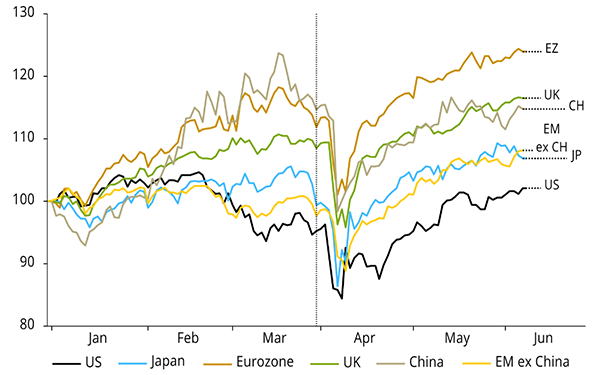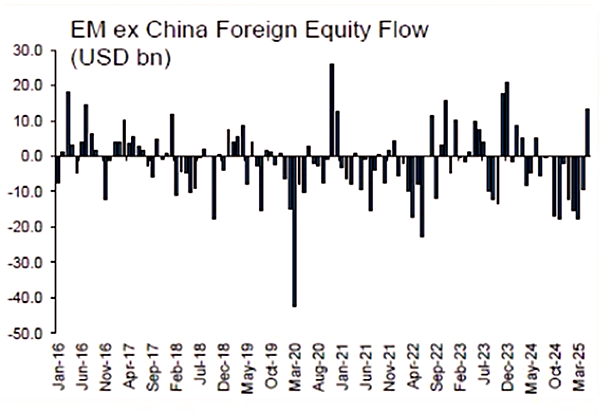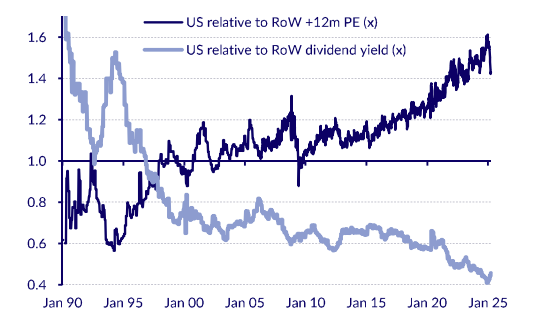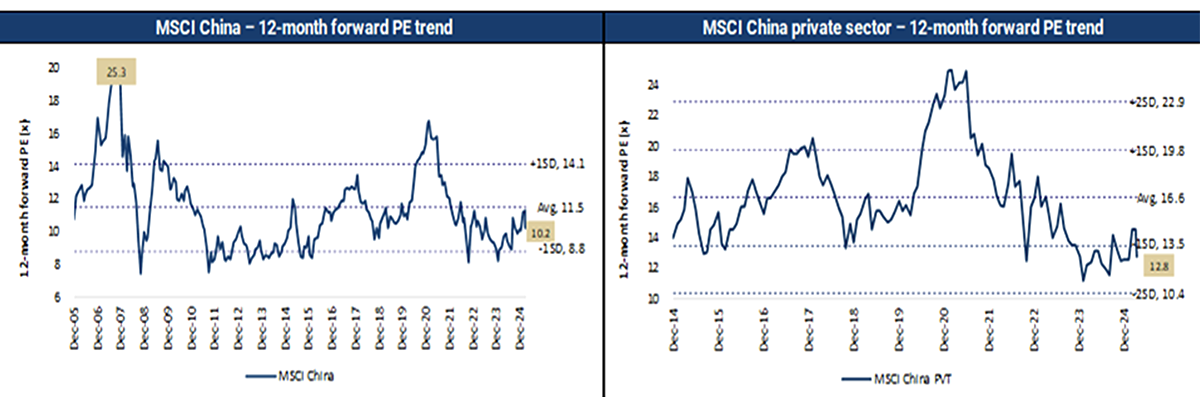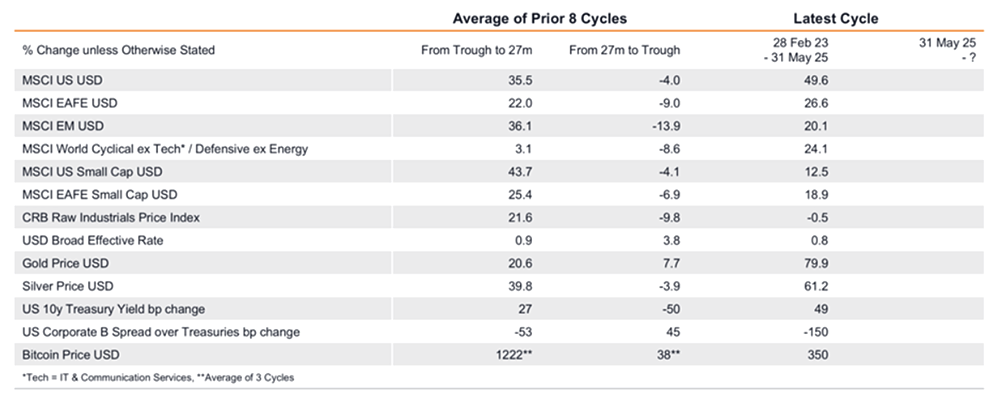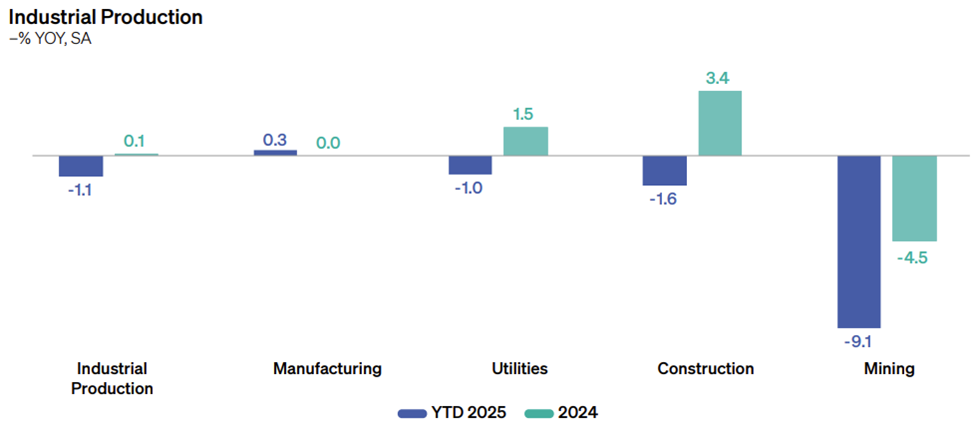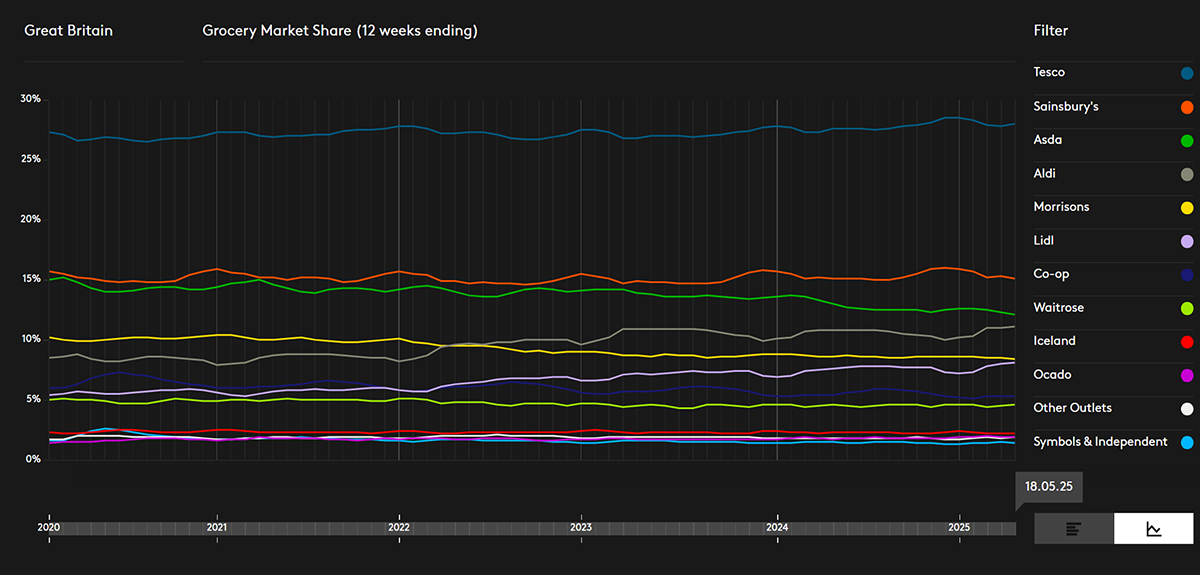What’s new
We are pleased to announce the recent expansion of our UCITS Fund platform with the addition of a global small cap equity strategy and a global equity strategy. Both strategies, available to certain global investors, are managed by our Quantitative Equity team.
| Financial Markets Returns (%) (C$) | Q2 | 1 Year |
|---|---|---|
| S&P/TSX Composite Index | 8.5 | 26.4 |
| S&P500 Index | 5.2 | 14.8 |
| MSCI Emerging Markets Net | 6.2 | 15.0 |
| FTSE Canada Universe Bond Index | -0.6 | 6.1 |
Global Equities
| International Equity Strategies (%) | Q2 | 1 Year |
|---|---|---|
| CC&L Q Global Equity | 8.1 | 20.7 |
| MSCI ACWI Index (CAD) (net) | 5.7 | 15.8 |
| CC&L Q Global Small Cap | 7.2 | 18.2 |
| MSCI ACWI Small Cap Index (CAD) (net) | 6.5 | 13.3 |
| CC&L Q ACWI Equity Extension1 | 6.6 | 23.4 |
| MSCI ACWI Index (net) | 5.7 | 15.8 |
| CC&L Q US Equity Extension1 | 5.9 | 19.7 |
| S&P 500 Index (Net 15%) | 5.1 | 14.4 |
| CC&L Q International Equity | 8.3 | 24.1 |
| MSCI ACWI ex USA Index (CAD) (net) | 6.2 | 17.4 |
| CC&L Q International Small Cap Equity | 12.0 | 21.2 |
| MSCI ACWI ex USA Small Cap Index (CAD) (net) | 10.9 | 18.0 |
| CC&L Q Emerging Markets Equity | 7.6 | 19.0 |
| MSCI Emerging Markets Index (CAD) (net) | 6.2 | 15.0 |
21.6%
Information Technology
16.9%
CommunicationCommuni-cation Services
12.4%
Industrials
1.2%
Consumer Staples
-5.5%
Energy
-5.6%
Health Care
21.7%
Korea
19.4%
Greece
18.8%
Peru
-2.7%
Switzerland
-3.7%
Thailand
-5.0%
Saudi Arabia
Canadian Equities
| Canadian Equity Strategies (%) | Q2 | 1 Year |
|---|---|---|
| CC&L Fundamental Canadian Equity | 9.5 | 24.7 |
| S&P/TSX Composite Index | 8.5 | 26.4 |
| CC&L Equity Income & Growth | 8.2 | 23.9 |
| S&P/TSX Composite Index | 8.5 | 26.4 |
| CC&L Fundamental Canadian Small Cap/Mid Cap | 14.3 | 26.4 |
| 60% S&P/TSX Small Cap Index & 40% S&P/TSX Completion Index | 12.1 | 24.5 |
| CC&L Canadian Equity Combined (Q Core/Fundamental) | 9.6 | 26.6 |
| 98% S&P/TSX Composite Index & 2% FTSE Canada 91 Day T-Bill Index | 8.4 | 25.9 |
| CC&L Q Canadian Equity Core | 9.6 | 28.5 |
| S&P/TSX Composite Index | 8.5 | 26.4 |
| CC&L Q Canadian Equity Growth | 10.2 | 29.1 |
| S&P/TSX Composite Index | 8.5 | 26.4 |
| CC&L Q Canadian Equity Extension1 | 8.7 | 32.2 |
| S&P/TSX Composite Index | 8.5 | 26.4 |
14.2%
Information Technology
14.1%
Consumer Discretionary
12.1%
Financials
3.1%
Health Care
2.6%
CommunicationCommuni-cation Services
1.3%
Energy
Canadian Fixed Income
| Fixed Income Strategies (%) | Q2 | 1 Year |
|---|---|---|
| CC&L Core Bond | -0.6 | 6.6 |
| FTSE Canada Universe Bond Index | -0.6 | 6.1 |
| CC&L Universe Bond Alpha Plus1 | -0.3 | 9.2 |
| FTSE Canada Universe Bond Index | -0.6 | 6.1 |
| CC&L Long Bond | -2.4 | 4.8 |
| FTSE Canada Long Term Overall Bond Index | -2.3 | 4.3 |
| CC&L Long Bond Alpha Plus1 | -2.1 | 7.3 |
| FTSE Canada Long Term Overall Bond Index | -2.3 | 4.3 |
| CC&L High Yield Bond | 0.8 | 9.2 |
| 30% Merrill Lynch US High Yield Cash Pay BB Index (Non CAD Hedged) (CAD$) & 30% Merrill Lynch US High Yield Cash Pay BB Index (CAD Hedged) & 30% FTSE Canada Corporate BBB Bond Index & 10% Merrill Lynch Canada BB-B High Yield Index |
0.7 | 8.4 |
| CC&L Short Term Bond | 0.5 | 6.4 |
| FTSE Canada Short Term Overall Bond Index | 0.5 | 6.3 |
| CC&L Money Market | 0.6 | 3.6 |
| FTSE Canada 91 Day T-Bill Index | 0.6 | 3.8 |
| CC&L Core Plus Fixed Income | 9.0 | – |
| FTSE Canada Universe Bond Index | -0.6 | – |
Balanced & Alternative Strategies
| Balanced Strategies (%) | Q2 | 1 Year |
|---|---|---|
| CC&L Balanced | 5.0 | 15.9 |
| 25% S&P/TSX Capped Composite Index & 35% MSCI ACWI Net (CAD$) & 40% FTSE Canada Universe Bond Index |
4.0 | 14.7 |
| CC&L Enhanced Balanced Fund | 5.1 | 16.1 |
| 20% S&P/TSX Capped Composite Index & 40% MSCI ACWI Net (CAD$) & 40% FTSE Canada Universe Bond Index |
3.9 | 14.2 |
| CC&L Core Income & Growth | 6.8 | 18.6 |
| 50% S&P/TSX Composite Index & 25% S&P/TSX Capped REIT Index & 25% FTSE Canada All Corporate Bond Index |
6.1 | 18.9 |
| Alternative Strategies (%) | Q2 | 1 Year |
|---|---|---|
| CC&L Multi-Strategy 1 | 1.5 | 12.5 |
| FTSE Canada 91 Day T-Bill Index | 0.6 | 3.8 |
| CC&L All Strategies Fund1 | 1.6 | 14.0 |
| FTSE Canada 91 Day T-Bill Index | 0.6 | 3.8 |
| CC&L Market Neutral1 | 3.7 | -0.1 |
| FTSE Canada 91 Day T-Bill Index | 0.6 | 3.8 |
| CC&L Q Global Market Neutral (Cdn)1 | 1.2 | 14.6 |
| FTSE Canada 91 Day T-Bill Index | 0.6 | 3.8 |
| CC&L Alternative Income1 | 0.6 | 6.6 |
| FTSE Canada 91 Day T-Bill Index | 0.6 | 3.8 |
| CC&L Fixed Income Absolute Return Strategy1 | 0.6 | 6.0 |
| FTSE Canada 91 Day T-Bill Index | 0.6 | 3.8 |
About Connor, Clark & Lunn Investment Management Ltd.
Founded in 1982, Connor, Clark & Lunn is a privately owned investment management organization dedicated to delivering outstanding client service and a wide range of attractive investment solutions to our diverse client base. We understand the investment challenges faced by individuals, pension plans, corporations, foundations, mutual funds, First Nations and other organizations, and focus our efforts on meeting their investment needs by offering a comprehensive array of investment strategies, spanning traditional and alternative asset classes in a variety of quantitative and fundamental styles.
|
Vancouver 2300 – 1111 West Georgia Street Vancouver, BC V6E 4M3 604-685-2020 . |
Toronto 1400 – 130 King Street West P.O. Box 240 Toronto, ON M5X 1C8 416-862-2020 . |
Montreal 1800 McGill College, Suite 1300 Montreal, QC H3A 3J6 514-287-0110 |
All data except MSCI Indices are as of June 30, 2025 and stated in Canadian dollars (CDN$). Source: Connor, Clark & Lunn Financial Group Ltd., FTSE Global Debt Capital Markets Inc., MSCI Inc., Thomson Reuters Datastream and S&P. Portfolio performance is preliminary, based on a representative account for the applicable strategy and may be subject to change. All performance data is gross of fees unless otherwise stated. Gross performance figures are stated after trading expenses and operating expenses but before management fees and performance fees, if applicable. Operating expenses include items such as custodial fees for segregated accounts and for pooled vehicles would also include charges for valuation, audit, tax and legal expenses. Management fees and additional operating expenses would reduce the actual returns experienced by investors. 1. These strategies are subject to performance fees, which will further reduce actual returns experienced by investors.
For further information on performance, please contact us at [email protected].
Source: MSCI Inc. The MSCI information may only be used for your internal use, may not be reproduced or redisseminated in any form and may not be used as a basis for or a component of any financial instruments or products or indices. MSCI makes no express or implied warranties or implied warranties or representations and shall have no liability whatsoever with respect to any MSCI data contained herein. This report is not approved, reviewed or produced by MSCI.



